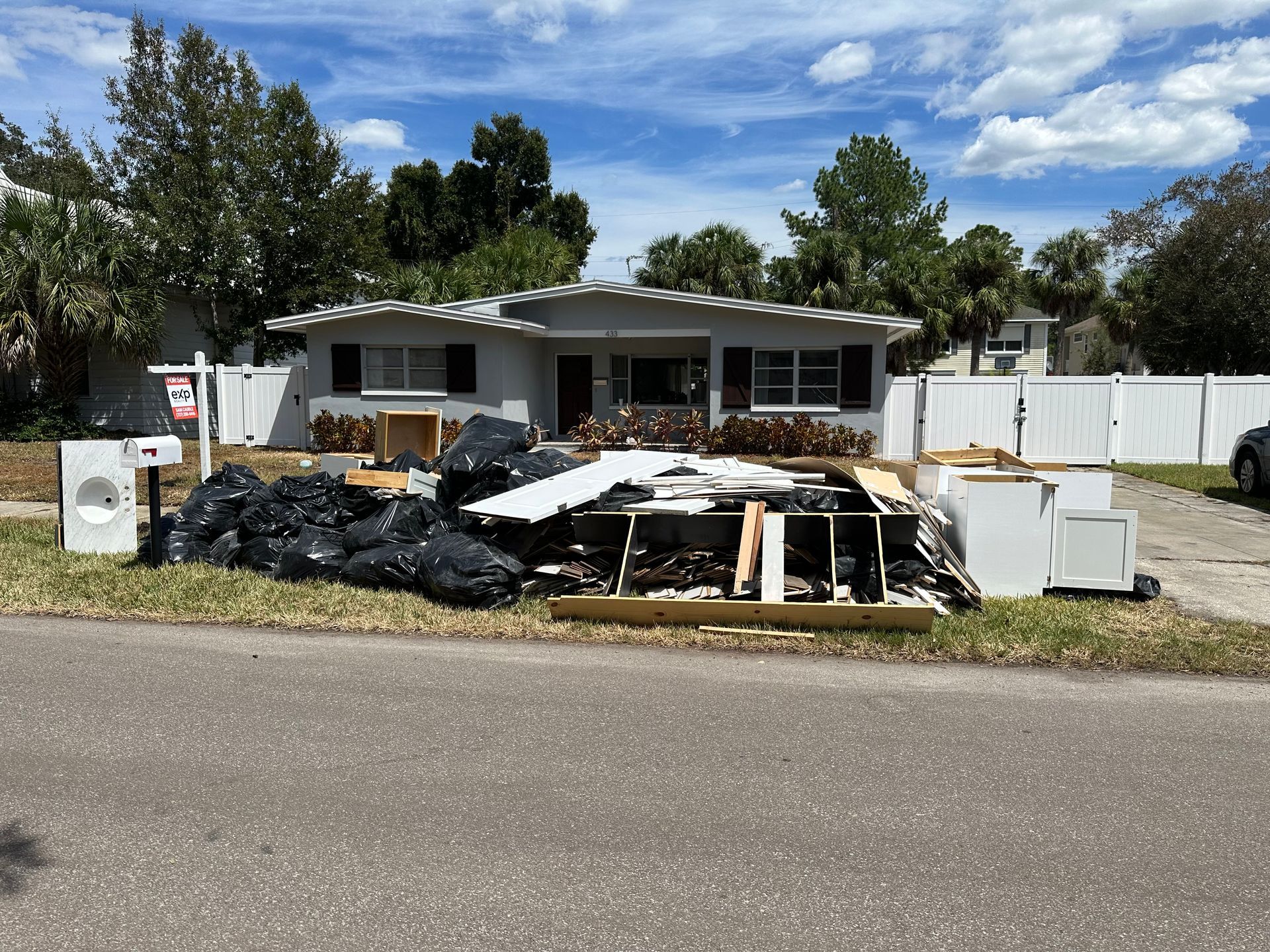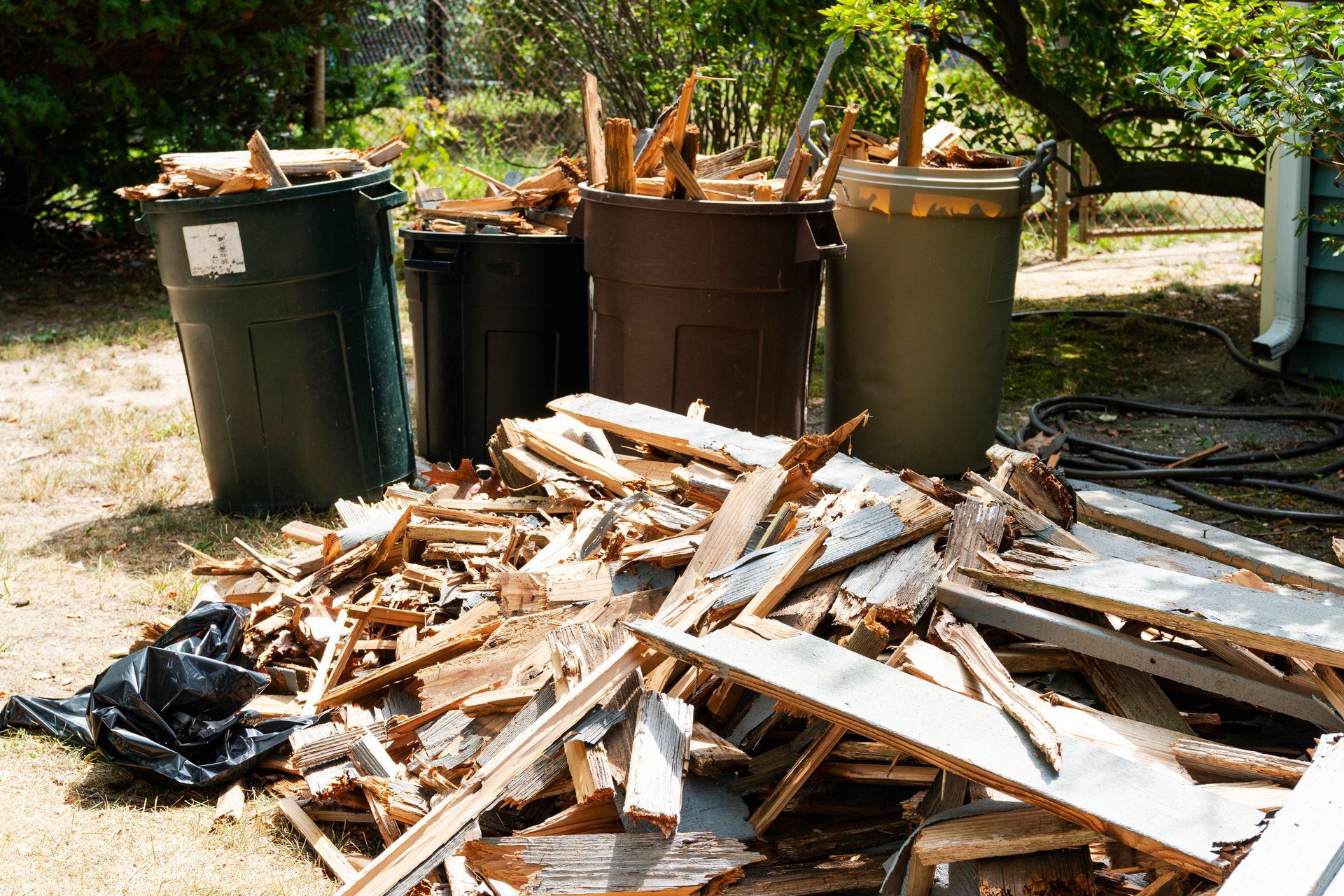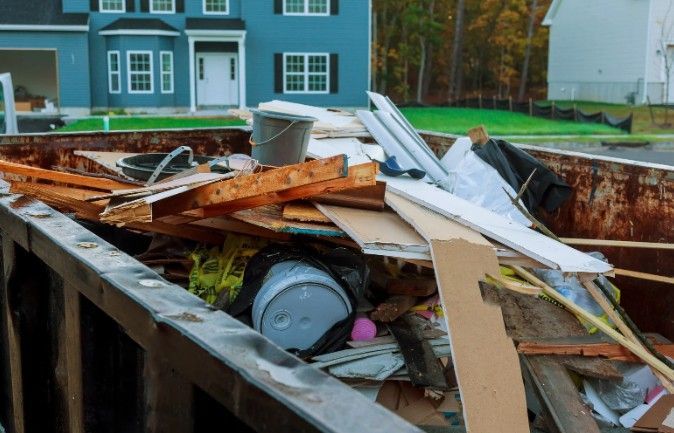Foreclosure Cleanouts Augusta: What You Need to Know
Foreclosure cleanouts in Augusta are a critical part of the real estate process, particularly when a property has been vacated or left in disarray. Whether you are a real estate investor, property manager, or homeowner, understanding how foreclosure cleanouts work can save you time, money, and stress. These cleanout services are designed to return a property to its marketable condition by removing unwanted items, debris, and any hazardous materials, ensuring that the space is safe, clean, and ready for new tenants or owners.
Why Foreclosure Cleanouts Matter in Augusta, Georgia
Foreclosure properties in Augusta, like many other parts of the country, can suffer from neglect. Previous owners might have left behind piles of personal belongings, broken appliances, or even dangerous items like expired chemicals. When dealing with these types of properties, it's not just about cleaning—it’s about restoration. A thorough foreclosure cleanout ensures that everything is removed, leaving a blank slate for the next phase of the property's life.
The goal of these cleanouts isn’t only to remove trash. It's about handling all items with care, ensuring proper disposal of everything, and creating an environment that is safe and suitable for the next occupant. Whether the goal is to sell, rent, or move into the property, a professional foreclosure cleanout will meet the specific needs of the situation.
What to Expect During a Foreclosure Cleanout in Augusta, GA
Foreclosure cleanouts typically follow a well-defined process. In Augusta, the first step is often a complete assessment of the property. This involves determining the type of debris or items left behind, such as furniture, appliances, or even hazardous materials. After this evaluation, a plan is made for removing the items safely and efficiently.
The cleaning crew will remove anything that doesn’t belong in the property, including junk, personal belongings, and anything that might present a safety concern. In some cases, the home may also need to be sanitized or disinfected, especially if the property has been vacant for a long time. Once the home is cleared out, the next steps involve organizing any repairs or maintenance needed before the property is ready for sale or rental.

The Cleanout Process in Augusta: A Step-by-Step Guide
Understanding the foreclosure cleanout process in Augusta helps ensure that nothing is overlooked. The first step typically involves scheduling an appointment for an in-depth consultation. This allows professionals to assess the scope of work and the specific needs of the property.
Once the cleanout crew arrives, they begin by clearing the property of all unwanted items. This can include furniture, appliances, and personal items left behind by the previous residents. Depending on the condition of the property, they may also remove carpeting, flooring, and other materials that can no longer be salvaged. Throughout this process, the team ensures that items are disposed of properly, following local regulations for waste management and recycling.
Why Hiring Professionals for Foreclosure Cleanouts in Augusta, Georgia Makes a Difference
While DIY cleanouts may seem like a cost-effective option, they come with their own set of challenges. A professional team specializing in foreclosure cleanouts brings experience, efficiency, and the necessary tools to the job. They understand the nuances of handling large-scale cleanups, especially in properties that may have been neglected for some time.
Additionally, professionals are familiar with local Augusta laws and regulations regarding waste disposal. They ensure that everything is disposed of correctly, minimizing the risk of fines or penalties. By hiring professionals for a foreclosure cleanout, property owners and investors can save time and avoid the headaches associated with managing the process themselves.
The Benefits of Professional Foreclosure Cleanouts in Augusta
There are several advantages to hiring a professional cleanout service for foreclosure properties in Augusta. For one, it ensures that the job is done quickly and efficiently. Professionals have the necessary training to handle a variety of situations, from debris removal to dealing with hazardous materials.
Another benefit is the ability to restore a property to its full potential. Many foreclosure properties can be cleaned up and made market-ready, significantly increasing their value. For real estate investors, this can be a major advantage in turning a profit. Similarly, property managers or homeowners looking to rent or sell the property can benefit from the improved appearance and safety of a professionally cleaned property.
Lastly, professional cleanouts often offer additional services such as minor repairs or sanitization, making the entire process easier. These added services ensure that the property is not just clean but also in good condition for its next occupant.
Choosing the Right Foreclosure Cleanout Service in Augusta, GA
When selecting a foreclosure cleanout service in Augusta, it’s essential to choose a company with a proven track record. Look for a company that has experience in handling properties that have gone through foreclosure. This experience ensures that they understand the specific challenges these properties present and know how to address them.
It’s also important to choose a service that offers comprehensive cleanout solutions. This includes debris removal, furniture and appliance disposal, and even the removal of hazardous materials. The more services the company offers, the easier it will be to get the property back into shape without having to hire multiple contractors.
Additionally, ensure the company you choose is licensed and insured. This protects both you and the company in case of accidents or damage during the cleanout process. A reputable company will also offer a clear and transparent pricing structure, ensuring that there are no surprise fees when the job is complete.
Common Issues with Foreclosure Cleanouts in Augusta
Foreclosure cleanouts come with their own set of challenges, especially when dealing with properties that have been abandoned for an extended period. One of the most common issues is dealing with the sheer volume of debris. In many cases, a home may be filled with large furniture items, old appliances, and other junk that can make the cleanout process time-consuming and difficult.
Another issue often encountered during foreclosure cleanouts is the presence of hazardous materials. Mold, asbestos, and chemicals can pose serious risks to health and safety. It’s essential that the cleanout team is properly trained in handling these materials and follows all necessary precautions to protect everyone involved.
Comprehensive Guide to Foreclosure Cleanouts in Augusta
Foreclosure cleanouts in Augusta involve more than just clearing out debris; it's about restoring the property to a functional, safe, and marketable state. Whether you're a real estate investor, property manager, or homeowner, a professional cleanout service can transform a neglected property into a space that’s ready for the next phase, whether that’s selling, renting, or moving in. From removing unwanted items to deep cleaning and sanitization, this service ensures that nothing is left behind, making the property safer and more attractive for future occupants.
Hiring an experienced team for foreclosure cleanouts in Augusta means you're entrusting your property to professionals who understand the nuances of handling such jobs. They have the tools and expertise needed to tackle everything from large debris to hazardous materials. By opting for a professional service, you can save time, reduce stress, and improve the value of your property, ensuring it's market-ready and safe for its next occupant.
The Importance of Professional Foreclosure Cleanouts in Augusta
When dealing with a foreclosure property in Augusta, cleaning it out properly can be one of the most critical steps in preparing it for sale or rental. Foreclosure cleanouts typically involve the removal of old furniture, appliances, personal belongings, and even hazardous materials left behind by former residents. A clean property not only looks more inviting but also avoids potential health risks, such as mold, asbestos, or unsanitary conditions. Professional foreclosure cleanouts in Augusta can help mitigate these issues, giving you peace of mind and ensuring that the property is safe for future tenants or buyers.
A professional service in Augusta brings more than just basic cleaning; it offers a complete restoration of the property. Experienced teams handle the entire process, from thorough assessments and safe removal of items to ensuring proper disposal of waste and materials. With a professional foreclosure cleanout service, your property can be turned into a functional space in no time, adding value and increasing its potential for a profitable sale or rent.
How Foreclosure Cleanouts Boost Property Value in Augusta
Foreclosure properties in Augusta can be an eyesore if left in disarray. To maximize the resale or rental value, it’s important to ensure the property is cleared, cleaned, and repaired before it’s put on the market. A foreclosure cleanout is a vital step in this process. It involves removing unwanted furniture, broken appliances, and anything that may make the property look neglected. By investing in a cleanout service, property owners can greatly enhance the property’s curb appeal and market value, making it more attractive to potential buyers or renters.
Conclusion
Foreclosure cleanouts in Augusta are an essential service for anyone involved in the real estate market, whether you are a property investor, manager, or homeowner. By hiring professionals, you can ensure that the property is cleared of all debris, sanitized, and ready for the next stage, whether that’s selling, renting, or moving in.
When looking for a foreclosure cleanout service in Augusta, make sure to choose a team with the experience, equipment, and knowledge needed to get the job done right. The right service will not only save you time but also help improve the value and safety of the property, making it an invaluable step in the foreclosure process. For more information or to schedule a foreclosure cleanout service in Augusta, contact us today. We are here to help you with all your cleanout needs. Business Name: Hinkins Disposal, Location: Augusta, GA, Phone: (706) 885-4032, Email: Hinkinsdisposal@gmail.com.




